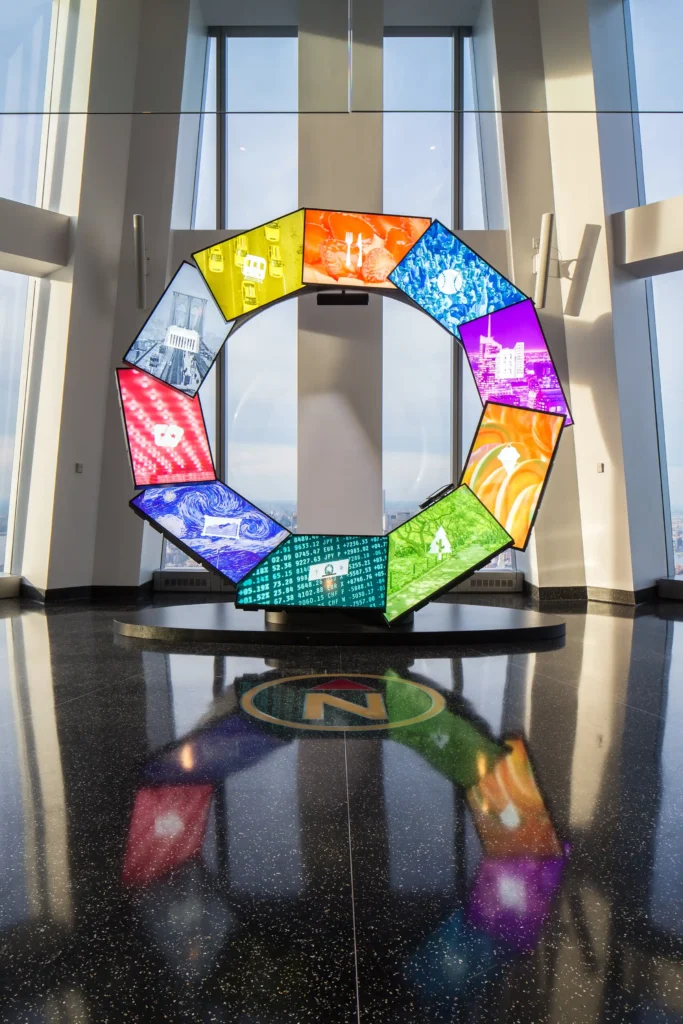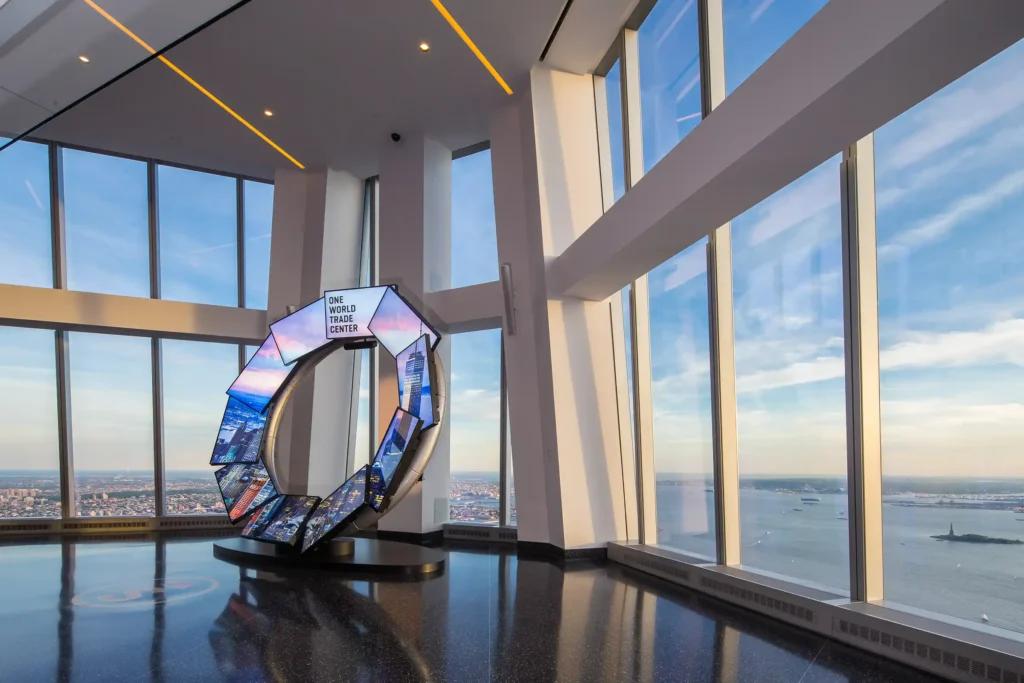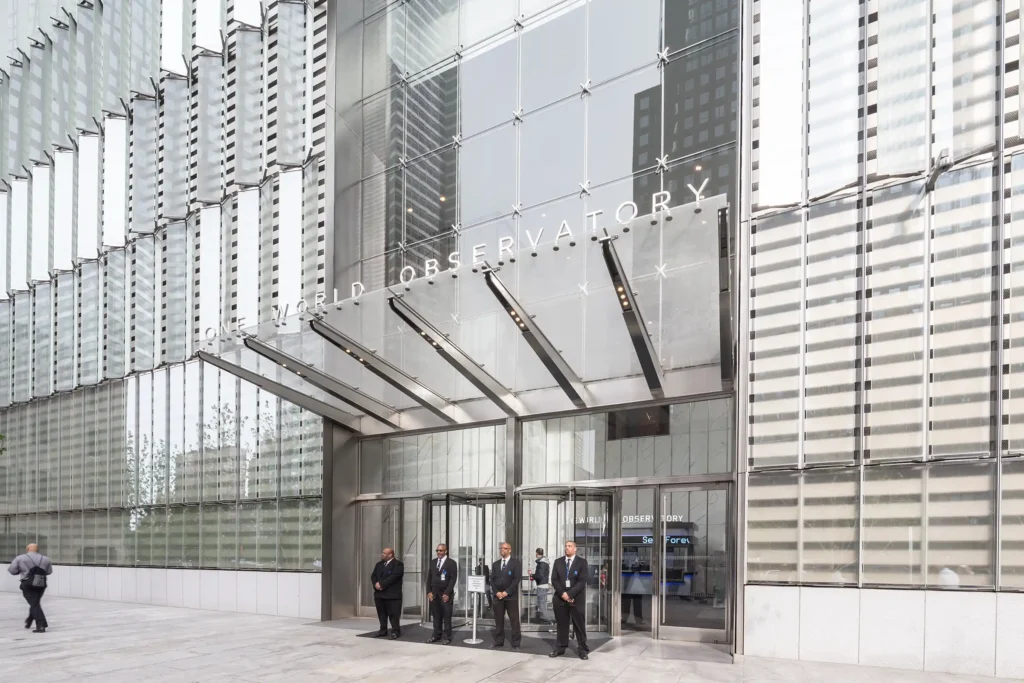By DAVID W. DUNLAP
An imposingly realistic vision of 2 World Trade Center, the ultimately doomed south tower, will begin appearing next month in a most unlikely place: the five special elevators servicing the observatory atop the new 1 World Trade Center.
From the moment the doors close until they reopen 47 seconds later on the 102nd floor, a seemingly three-dimensional time-lapse panorama will unfold on three walls of the elevator cabs, as if one were witnessing 515 years of history unfolding at the tip of Manhattan Island.
For less than four seconds (roughly proportional to the time the twin towers stood), a jarringly familiar pinstripe facade will loom into view on one wall of the cab. Then, in a quick dissolve, it will evanesce.
There would have been no way around Sept. 11, 2001, said David w. Checketts, the chairman and chief executive of Legends Hospitality, the company chosen by the Port Authority of New York and New Jersey in 2013 to operate the three-level observatory.
“The event is certainly a key part of history,” he said. “We did not think you could ignore it. Having it appear in the year it did and disappear in the year it did was the respectful way of addressing the fact that it was part of the landscape.” Two World Trade Center was the site of the original observatory.
In five elevators, years fly past and a doomed south tower appears.
Mr. Checketts acknowledged that the plan to confront sightseers with an image of the old tower spurred a lot of debate within his own company and with the Port Authority and the Durst Organization, developers of the new tower.
“There were strong opinions and emotional reactions all around,” he said.
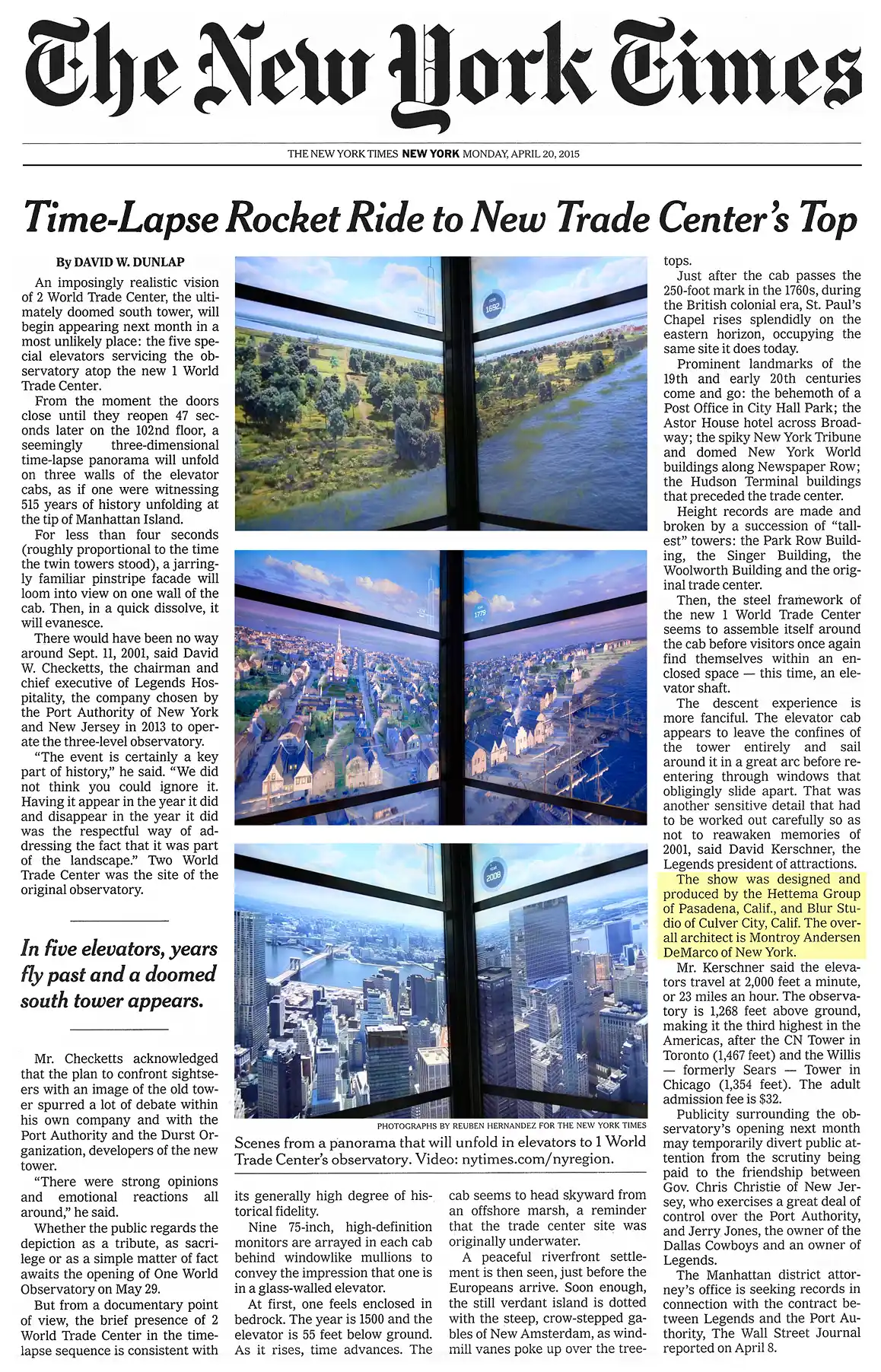
PHOTOGRAPHS BY REU8EN HERNANDEZ FOR THE NEW YORK TIMES
Scenes from a panorama that will unfold in elevators to 1 World Trade Center’s observatory. Video: nytimes.com/nyregion.
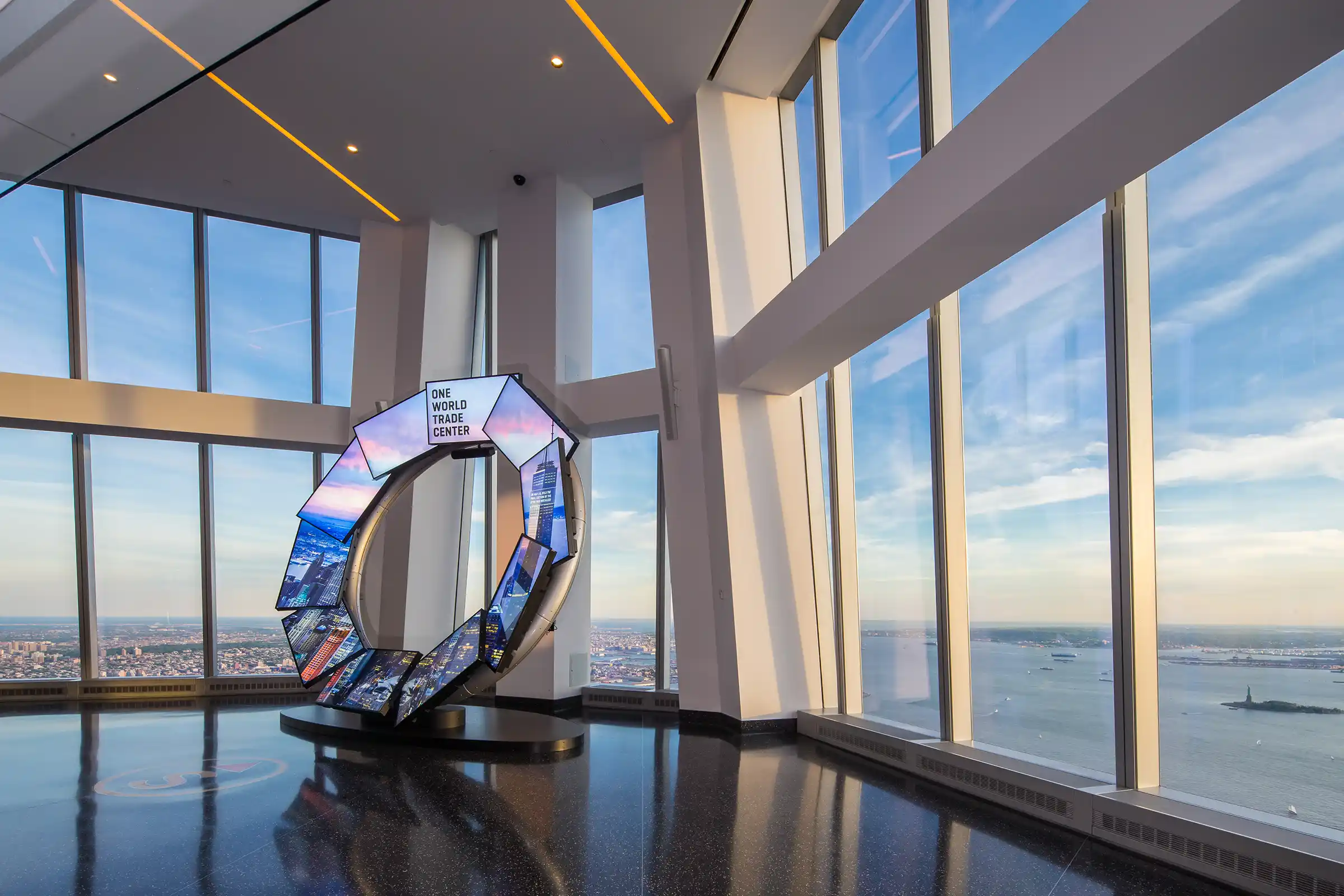
Whether the public regards the depiction as a tribute, as sacrilege or as a simple matter of fact awaits the opening of One World Observatory on May 29.
But from a documentary point of view, the brief presence of 2 World Trade Center in the timelapse sequence is consistent with its generally high degree of historical fidelity.
Nine 75-inch, high-definition monitors are arrayed in each cab behind windowlike mullions to convey the impression that one is in a glass-walled elevator.
At first, one feels enclosed in bedrock. The year is 1500 and the elevator is 55 feet below ground. As it rises, time advances. The cab seems to head skyward from an offshore marsh, a reminder that the trade center sit(, was originally underwater.
A peaceful riverfront settlement is then seen, just before the Europeans arrive. Soon enough, the still verdant island is dotted with the steep, crow-stepped gables of New Amsterdam, as windmill vanes pol<e up over the treetops.
Just after the cab passes the 250-foot mark in the 1760s, during the British colonial era, St. Paul’s Chapel rises splendidly on the eastern horizon, occupying the same site it does today.
Prominent landmarks of the 19th and early 20th centuries come and go: the behemoth of a Post Office in City Hall Park; the Astor House hotel across Broadway; the spiky New York Tribune and domed New York World buildings along Newspaper Row; the Hudson Terminal buildings that preceded the trade center.
Height records are made and broken by a succession of “tallest” towers: the Park Row Building, the Singer Building, the Woolworth Building and the original trade center.
Then, the steel framework of the new 1 World Trade Center seems to assemble itself around the cab before visitors once again find themselves within an enclosed space – this time, an elevator shaft.
The descent experience is more fanciful. The elevator cab appears to leave the confines of the tower entirely and sail around it in a great arc before reentering through windows that obligingly slide apart. That was another sensitive detail that had to be worked out carefully so as not to reawaken memories of 2001, said David Kerschner, the Legends president of attractions.
The show was designed and produced by the Hettema Group of Pasadena, Calif. The overall architect is Montroy Andersen DeMarco of New York.
Mr. Kerschner said the elevators travel at 2,000 feet a minute, or 23 miles an hour. The observatory is 1,268 feet above ground, making it the third highest in the Americas, after the CN Tower in Toronto (1,467 feet) and the Willis – formerly Sears – Tower in Chicago (1,354 feet). The adult admission fee is $32.
Publicity surrounding the observatory’s opening next month may temporarily divert public attention from the scrutiny being paid to the friendship between Gov. Chris Christie of New Jersey, who exercises a great deal of control over the Port Authority, and Jerry Jones, the owner of the Dallas Cowboys and an owner of Legends.
The Manhattan district attorney’s office is seeking records in connection with the contract between Legends and the Port Authority, The Wall Street Journal reported on April 8.
